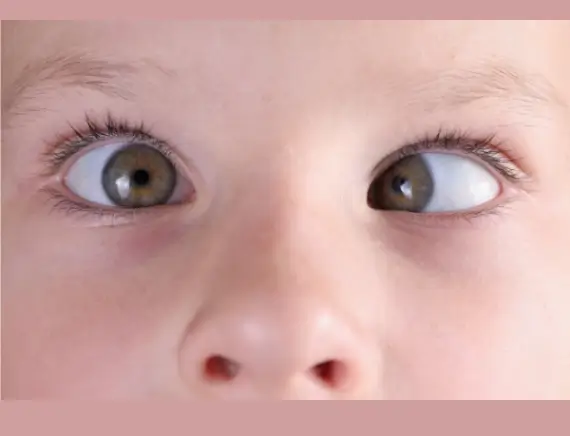Diabetic Retinopathy: Early Signs and Effective Management
Diabetes is one of the deadliest diseases known to mankind. It affects about 1 in 11 people worldwide. As for…

Eye problems in children are common and often go undetected. If detected early, these problems can be treated before they become permanent.Most children do not complain of vision problems, and some complaints are often neglected thinking the child is being naughty. This affects the child's performance in school and interferes with the child's personal growth. Some of these children have poor reflexes due to inadequate vision and are unable to perform in sports activities. Furthermore, myopia tends to increase and progress as the child grows. Hence it is recommended all children should have an eye check up before 3 years of age by an eye specialist.
Currently, 5 in 10 children have eye related morbidity.
Refractive errors in children are common vision problems caused by the eye's inability to focus light properly on the retina. Types include myopia (nearsightedness), hyperopia (farsightedness), and astigmatism. Uncorrected refractive errors can impact academic performance, cause eye strain, and lead to amblyopia (lazy eye). Regular eye exams and early intervention with corrective lenses are crucial to ensure optimal visual development and well-being in children.
Amblyopia, commonly known as Lazy Eye, is a vision disorder that occurs during childhood. It happens when one eye develops better visual acuity than the other, leading the brain to favor the stronger eye and ignore input from the weaker one. If left untreated, amblyopia can cause permanent vision impairment. Early detection and intervention, usually through patching or vision therapy, can help improve vision in the affected eye and prevent long-term visual deficits.
Allergic conjunctivitis is an eye condition caused by allergies, such as pollen, pet dander, or dust mites. It results in inflammation of the conjunctiva, the thin tissue covering the front of the eye and inner eyelids. Symptoms include redness, itching, tearing, and swollen eyelids. Avoiding allergens, using artificial tears, and applying cool compresses can provide relief. In severe cases, antihistamine eye drops or other medications may be prescribed to manage symptoms effectively.
Squint (Strabismus): Squint, also known as strabismus, is a condition where the eyes do not align properly, causing them to point in different directions. This misalignment can be constant or intermittent and may lead to double vision or the brain suppressing input from one eye to avoid confusion. Early diagnosis and treatment, often with glasses, eye patches, or eye exercises, can help align the eyes and improve binocular vision.
Nystagmus: Nystagmus is an involuntary and repetitive movement of the eyes, which can be present at birth or develop later in life. It may occur horizontally, vertically, or in a rotary pattern. Nystagmus can be congenital or acquired due to neurological conditions, medications, or inner ear problems. While there is no cure, treatment options focus on addressing the underlying cause and managing symptoms to improve visual function.
Eye injuries can occur from accidents, sports, or exposure to harmful substances. Types include corneal abrasions, chemical burns, blunt trauma, penetrating injuries, and more. Immediate medical attention is crucial to prevent complications and preserve vision. If injured, seek prompt evaluation by an eye care professional or visit the nearest emergency room.
Birth anomalies, also known as congenital anomalies or birth defects, are structural or functional abnormalities present at birth. They can affect various body parts or systems and can be caused by genetic factors, environmental influences, or a combination of both. Common types of birth anomalies include heart defects, cleft lip and palate, neural tube defects, limb abnormalities, and chromosomal disorders. Early detection, medical intervention, and supportive care are essential for managing and treating birth anomalies to improve the child's health and quality of life.
Developmental cataract is a clouding of the eye's lens in infancy or childhood. It can be present at birth or develop shortly after. Causes include genetics and infections during pregnancy. Surgery to remove the cataract and restore vision is common. Early diagnosis and intervention are essential for better outcomes.
The primary symptom of squint, or strabismus, in children is the misalignment of the eyes. Here are some common symptoms associated with squint:
It's important to note that squint can vary in severity and presentation among children. Some children may have noticeable misalignment, while in others, the misalignment may be subtle or intermittent. If you suspect your child has a squint or are observing any of these symptoms, it's recommended to consult with a pediatric ophthalmologist or an eye specialist for a comprehensive evaluation and diagnosis. Early detection and treatment can help prevent potential vision problems and ensure proper visual development.
The treatment for squint, or strabismus, in children depends on several factors, including the type and severity of the squint, the child's age, and the underlying cause. Here are some common treatment options:
It's important to consult with a pediatric ophthalmologist or an eye specialist to determine the most appropriate treatment plan for your child's squint. The treatment approach will be tailored to their specific needs and may involve a combination of interventions to achieve the best possible outcome. Regular follow-up visits will be necessary to monitor progress and make any necessary adjustments to the treatment plan.
Diabetes is one of the deadliest diseases known to mankind. It affects about 1 in 11 people worldwide. As for…
Think about waking up on a random morning and finding a tiny red bump sitting on your eyelids. You touch…
Do you spend long hours staring at the screen or reading fine print? If so, you might have experienced tired…